High in the rugged Andes Mountains of Peru, a remarkable piece of engineering quietly stretches across the Apurímac River. It is not made of steel or concrete. Instead, it is crafted entirely by hand from grass. Known as Q’eswachaka, this humble suspension bridge is the last of its kind a living artifact from the Inca Empire.
For over 600 years, this bridge has stood as a symbol of community, ingenuity, and cultural resilience. While the world around it has modernized, Q’eswachaka remains a living connection to the past, rebuilt every year with the same materials and methods used centuries ago.
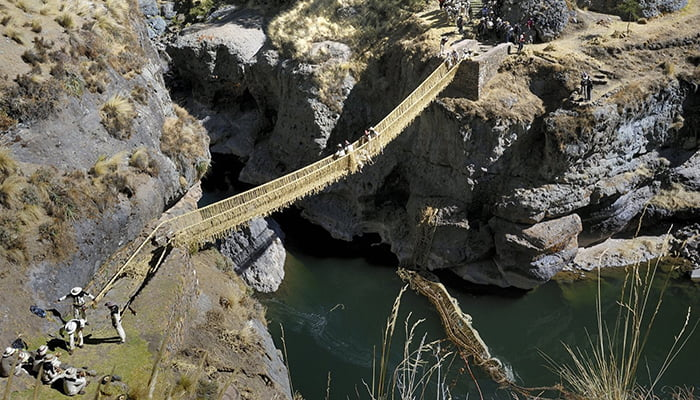
Woven from Nature and History
The word “Q’eswachaka” comes from the Quechua language, meaning “braided bridge.” And braided it is crafted from ichu grass, a native high-altitude plant found in the Andean region. To an outsider, it may appear fragile, almost primitive. But looks can be deceiving.
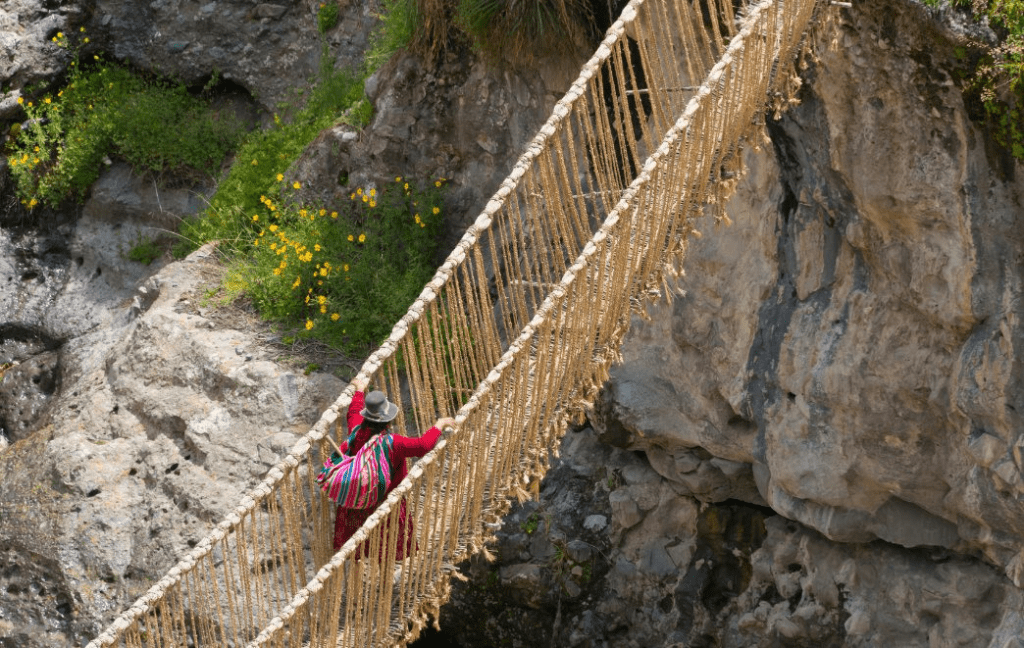
Each June, local communities from the surrounding villages of Huinchiri, Chaupibanda, Choccayhua, and Ccollana come together in a celebration of unity and heritage. They spend several days harvesting the grass, twisting it into long ropes, and then carefully weaving and assembling the bridge without any machinery. The result is a structure strong enough to support cars but it is reserved only for pedestrians and livestock, in respect for tradition.
Video:
MIT Put It to the Test
You might wonder just how strong a bridge made from grass can be. To answer that question, a team of engineers from the Massachusetts Institute of Technology visited Q’eswachaka and tested its capabilities. Their findings were astonishing.
Despite its seemingly fragile construction, the bridge can withstand up to 200,000 pounds of weight. That’s the equivalent of more than 50 midsize cars or a loaded commercial truck. The secret lies in the tension and elasticity of the woven fibers. Each strand distributes the load across the entire bridge, creating a surprisingly durable and flexible structure.
What impressed the engineers most was the bridge’s resilience under stress. While modern materials can snap under sudden strain, Q’eswachaka flexes and moves, absorbing impact in a way that reduces catastrophic failure. It may be built from grass, but it outperforms expectations.
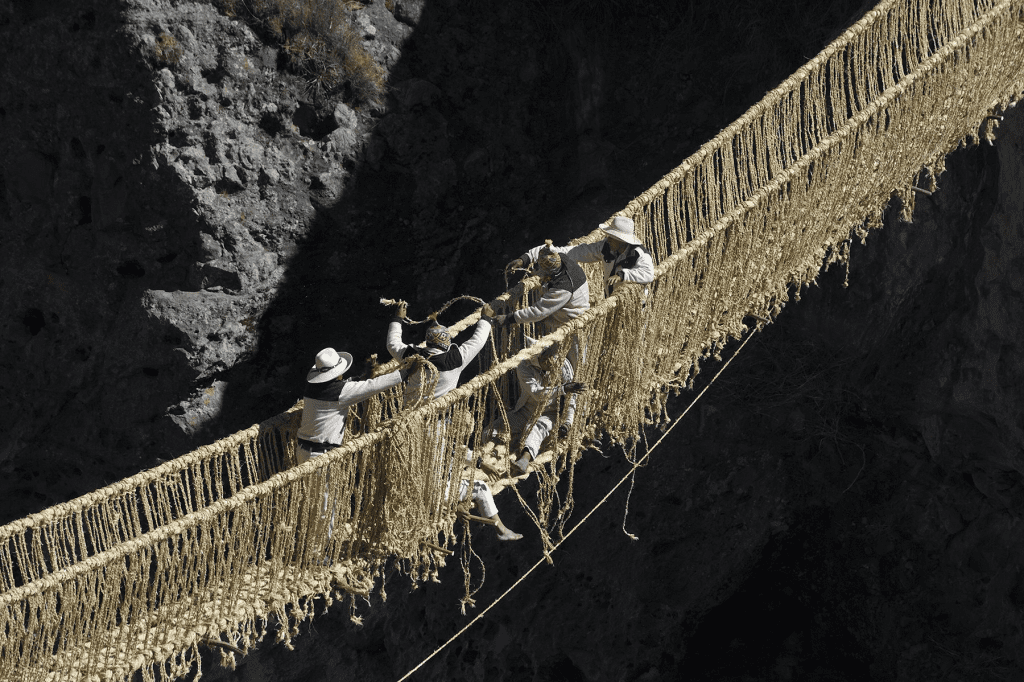
A Community Celebration of Heritage
The rebuilding of Q’eswachaka is more than an act of maintenance it is a cultural ceremony deeply tied to identity and pride. The process begins with a blessing from community elders, followed by days of hard labor where every villager has a role. Men typically handle the rope twisting and structural weaving, while women help prepare food and support the ceremony through song and dance.
When the bridge is finally completed, the community celebrates with traditional feasts, music, and storytelling. It is a moment when past and present come together, not in a museum, but in the real world suspended above a roaring river.
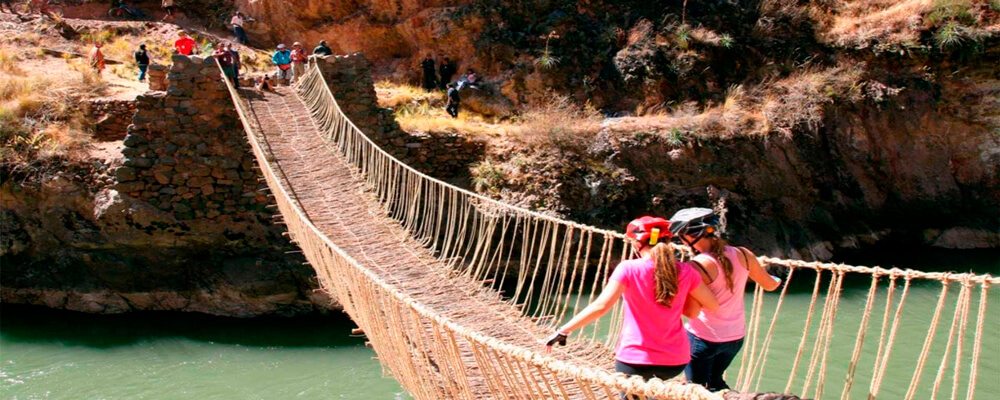
A Living Connection to the Inca Empire
The Inca Empire was known for its advanced infrastructure, including a vast network of roads and bridges that connected remote parts of the Andes. Q’eswachaka is the last remaining example of those bridges still in active use. Its survival is not due to conservation efforts by governments or global institutions, but by the will and commitment of local people who understand the value of their heritage.
This bridge is not only a marvel of ancient engineering it is also a reminder of what community, knowledge, and shared purpose can achieve.
Video:
The 124-foot Bridge Woven by Hand
Preserving the Future of the Past
In recent years, efforts have been made to document and preserve the tradition of Q’eswachaka. Though still remote, the site now draws tourists, historians, and engineers from around the world. It has been recognized as an Intangible Cultural Heritage of Humanity by UNESCO, and there are calls to ensure that future generations can continue the practice.
Still, the bridge’s continued existence depends not on international acclaim but on the people of the Andes. As long as they gather each year to rebuild it, Q’eswachaka will endure not as a relic, but as a living thread in the fabric of Inca history.
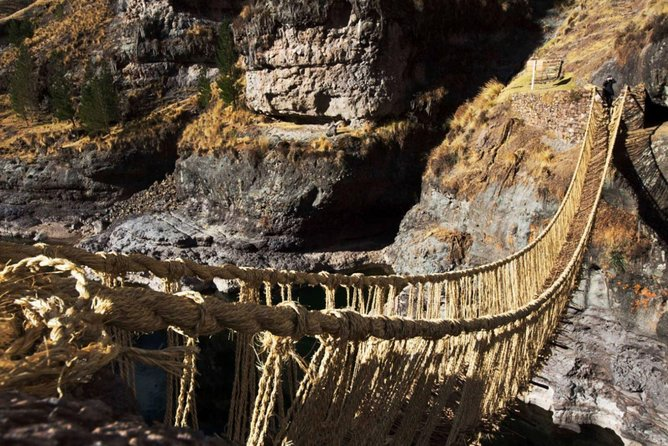
Conclusion: Strength Woven from Simplicity
Q’eswachaka is more than a bridge. It is a story of resilience, tradition, and innovation. Woven from grass and bound by community, it holds together not just villagers’ paths across a river, but their shared identity and cultural legacy.
In a world chasing the latest and greatest technologies, this ancient bridge reminds us that sometimes, the most impressive structures are the ones rooted in simplicity and built with heart.


